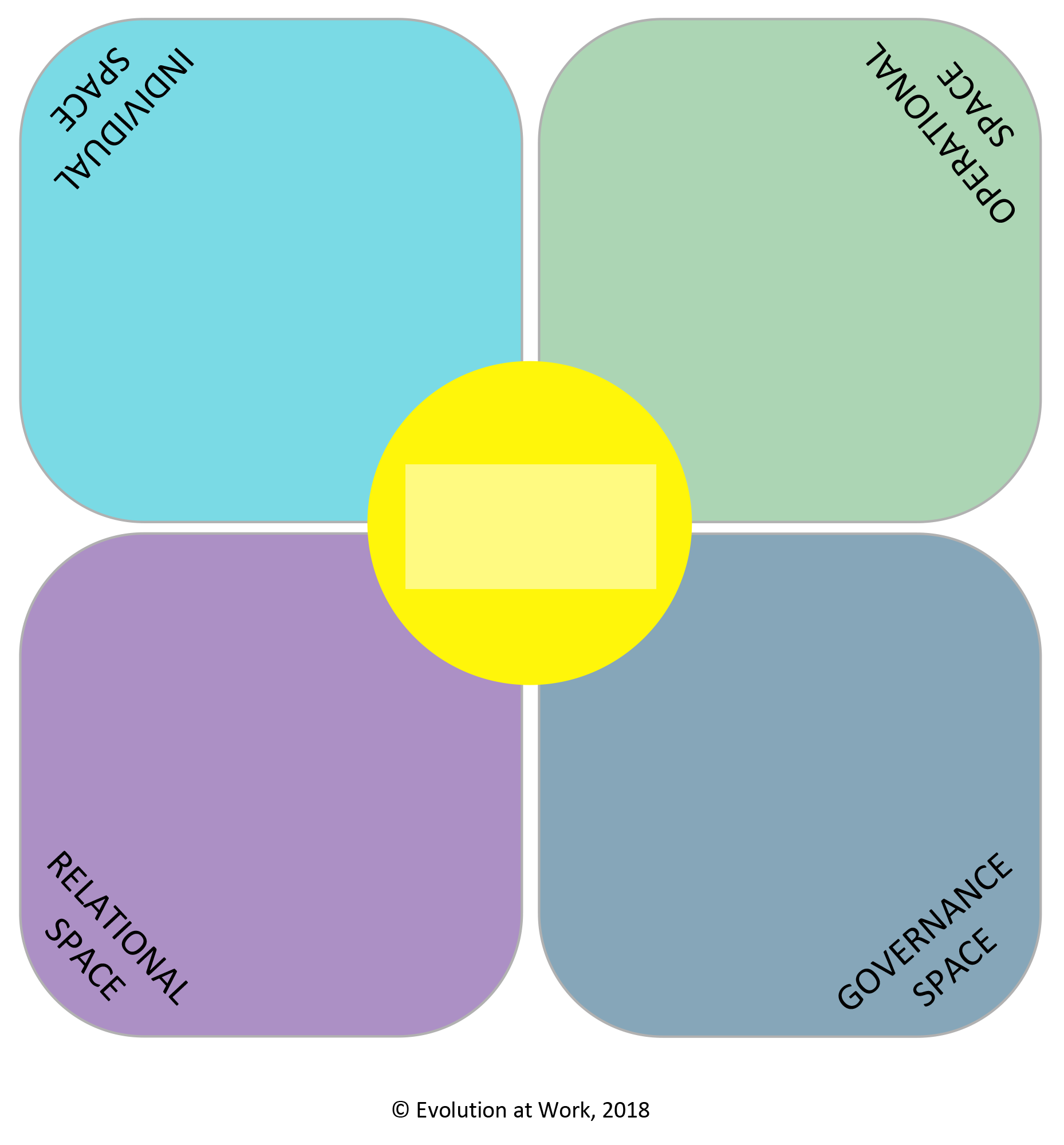Language of Spaces
Steward: Haroon Alvi
Language of Spaces is a methodology used by individuals or teams to process tensions (or get unstuck) in a self-organized environment. It is a facilitated exercise to begin with, but turns into a mindset once you have learnt it.
Let us start by defining the spaces that we’re talking about. When it comes to the work in the organization, first there is what in the methodology is called Organizational Space. That’s where roles do operational work. Next is Governance space. That’s where you develop the structure of the company. Both these spaces cover the context of the organization.
We humans energize the roles of an organization and bring everything to life. We form the parallel Context of the People. This is where we live our social dynamics, our relationships, our culture in general and also our individual autonomy, needs, desires, expectations, decisions, etc. This is the space where we need to process tensions that are not organizational. What is lacking is the ability to differentiate the two contexts. For example, some individuals and teams have difficulty processing tensions with a personal aspect. That’s where practitioners get stuck. Although everything IS processable, in reality this is where people stop processing tensions.
Having a better understanding of the differentiation between the people context and the organization context enables you to deal with frustration and tension more effectively.

Question List for Working Through the Tool
Operational Space
- From which role are you sensing this tension?
- Which other role is impacted by the operational aspect of the tension?
- From which of your role’s accountabilities did that tension arise?
- Can you remember a concrete situation where the other role was the operational cause of the tension?
- Would your role like to expect something from the other role?
- Which purpose and accountabilities of your role affects this tension?
- What is a concrete next step your role will take to resolve the operational aspect of the tension?
Governance Space
- Does the governance aspect of your tension address uncertainty or lack of clarity in defining the accountability of roles?
- Taking the information from the operational space, what is missing in the governance space (Structure of the company, practices, policies)
- What is a concrete next step your role will take to resolve the governance aspect of the tension?
Note: Now you leave your roles behind and move into the people context. You are now “insert your name”
Relational Space
- How would you describe your relationship with the other person (who is involved in this tension)
- What are the emotions and feelings come up when you think and talk about the above relationship?
- Describe a specific situation where a relational aspect between you and this other person was triggered?
- Taking the situation from the question above, imagine you’re watching that scenario on a TV screen from a third person perspective, where can you see the tension arise?
- Describe the way you would have wanted it to go if you had a magic wand and could do anything?
- What specifically is it that you need from the other person?
- What do you think this other person needs from you?
- What is a concrete next step you will take to resolve the relational aspect of the tension?
Individual Space
- What part inside of you contributed to this tension?
- How does it feel to live with this tension?
- How would you like to experience yourself differently? (trying to remember a time when this tension did not exist)
- What is a concrete next step you will take to resolve the individual aspect of the tension?

